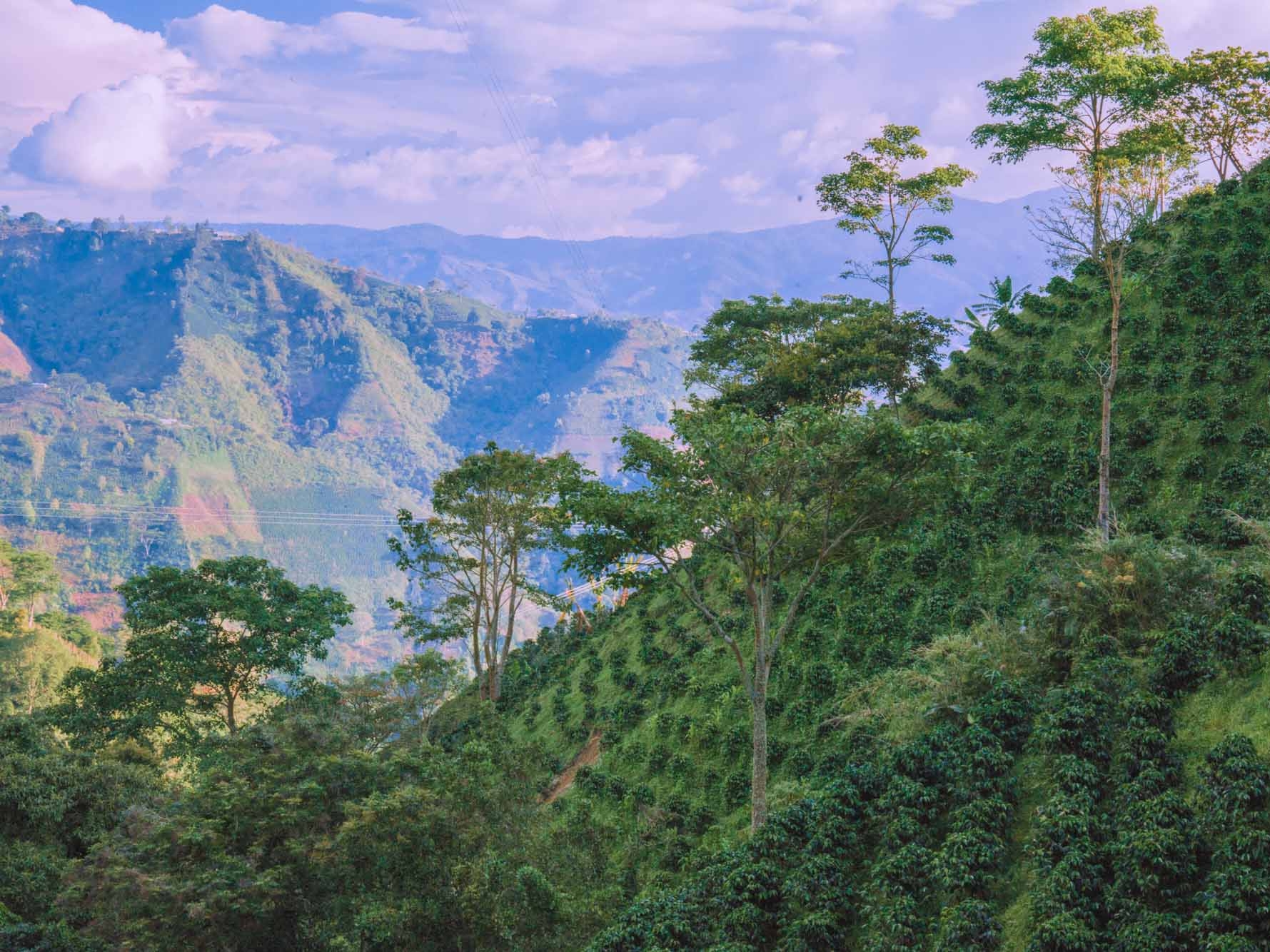F A R M I N G
FARMING
Great coffee starts at the farm.
Coffee Blossom Finca Primavera, Colombia
COFFEE IS A FRUIT
Coffee is a flowering fruit tree, typically grown between the Tropics of Cancer and Capricorn, near the equator. The roasted bean that we grind and drink is the seed found inside the fruit of this tree. The trees take years to mature enough to produce fruit and even then only produce a couple of pounds.
FARMS COME IN ALL SIZES
Most farms will create a nursery to raise the seedlings before transplanting them into the main plantation. A coffee farm can be someone’s backyard where they grow a few dozen trees and sell to a wet mill or a cooperative to process the coffee, or it could be a gigantic plantation producing thousands of tons of coffee. Either way, and all the ways in between, they can produce outstanding coffee, but it takes real work to make it happen.
Coffee Nursery Finca Las Nubes, El Salvador
Coffee on Hillside Huila, Colombia
HARVESTING
Monitoring the health of the soil and thousands of individual plants is work year round, but when it comes to harvest season, most farms will need extra hands. Many professional pickers will travel from farm to farm to help harvest coffee cherries and make a living.
Harvest seasons differ from country to country. They can be long, like The Democratic Republic of the Congo where they harvest from September through June, or short, like Peru where they harvest only during the peak of summer. This results in different coffee origins being available at different times of year.
PICKING
The pickers can make or break the quality of the coffee by which cherries they choose to pick. In some very large farms, machines are used to pick cherries instead of human pickers. This can save on labor and increase yield, but the large machines that shake trees in order to remove the cherries pick indiscriminately. To achieve specialty coffee, each cherry needs to be picked at its ripest. Quality-focused farms will make multiple passes over several weeks to give pickers the opportunity to harvest the right fruit at the right time. Upon harvesting, they have to be quickly and carefully processed to remove the seed. During this process, it is often sorted multiple times for quality. All of this happens at the country of origin.
Coffee cherries in Colombia. The red ones are ripe and ready to be picked. The green ones need a little longer.
While we purchase coffees based almost entirely taste, there are several certifications that can tell you more about your coffee. Organic, shade grown, bird-friendly, and fair trade are the most common, and in recent years, transparency reports have become a great way to learn about a roaster’s relationships with the farmers they work with.
Check out the section on Processing to see how the picked ripe coffee cherries turn into the green coffee that roasters receive.
All photos on this page courtesy of Cafe Imports.




